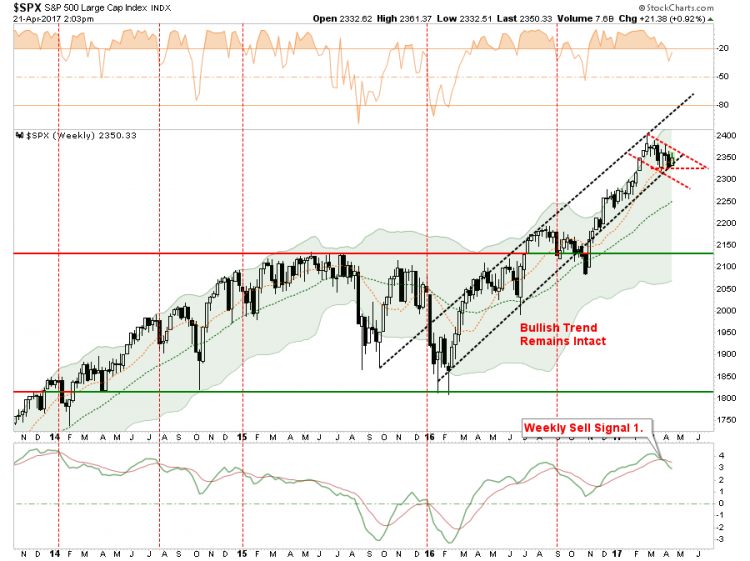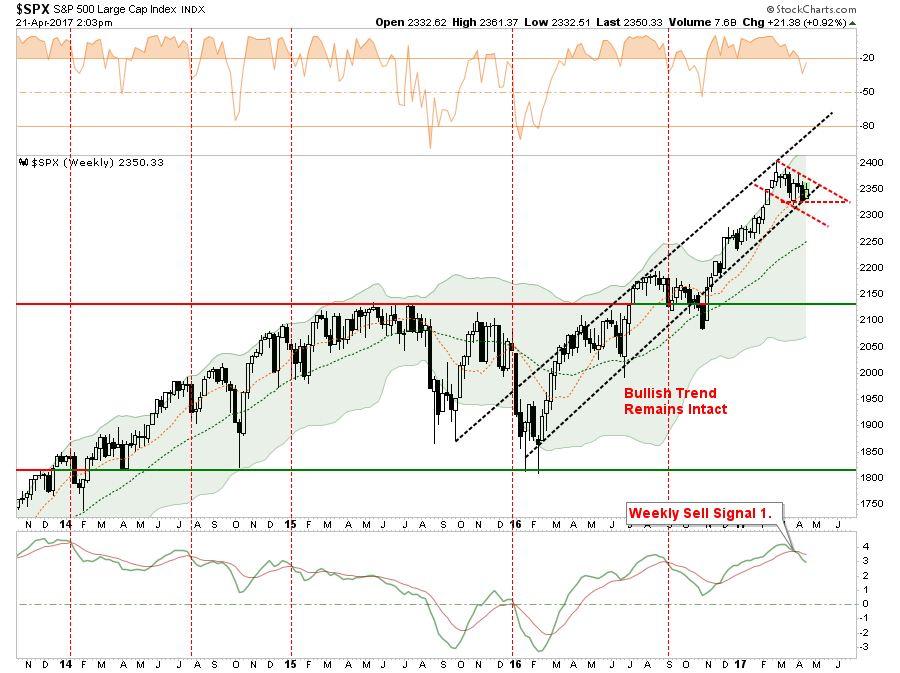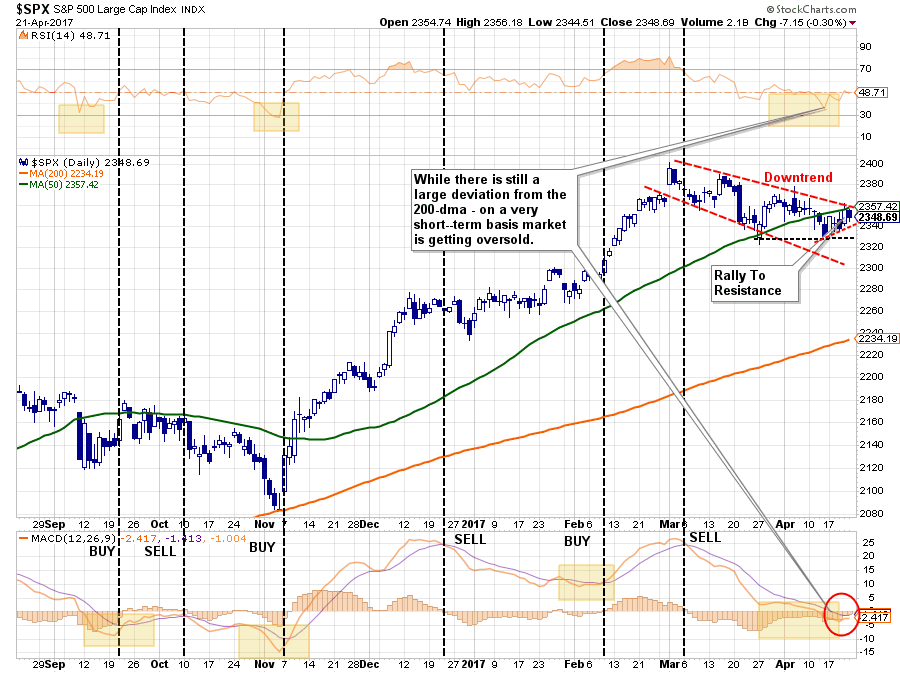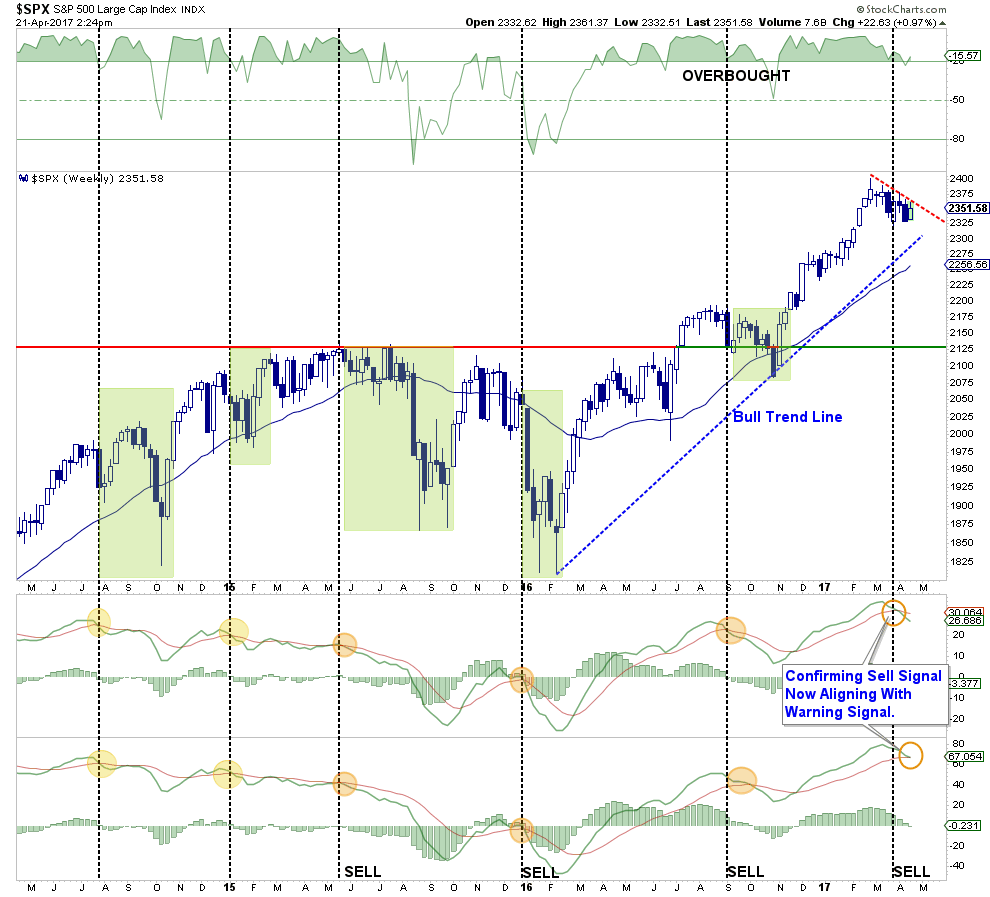
In last weekend’s newsletter, I suggested the markets could rally this week with some very specific caveats. Let’s review where we are. (All charts updated through Friday.)
“The market has now tripped the first signal as shown above, and below, sending a warning that further weakness could ensue. With the first signal registered, combined with a break of the 50-dma, we are now on ‘a signal-1 alert.’”

“With portfolios already hedged, as we added a lot of bond and interest rate sensitive holdings back in January, there is no action to take currently. This is why, for now, it is only an ‘alert’ that something more important is developing.
IMPORTANT: By the time weekly signals are issued on an intermediate-term basis, the market is generally oversold, with ‘bearish’ sentiment increasing, on a short-term (daily) basis. Given those short-term conditions, it is quite likely the markets will rally next week.”

As expected the market did rally last week. As I noted it would be the success or failure of the rally attempt which would dictate what happens next.
- “If the market can reverse course next week, and move back above the 50-dma AND break the declining price trend from the March highs, then an attempt at all time highs is quite likely. (Probability Guess = 30%)
- However, a rally back to the 50-dma that fails will likely result in a continuation of the correction to the 200-dma as seen previously. From current levels that would suggest a roughly -5% drawdown. However, as shown below, those drawdowns under similar conditions could approach -15%. (Probability Guess = 70%)”
As of Friday, the market failed at resistance closing below the 50-dma for the week. As denoted by the red dashed lines, the current price action of the market is being compressed within a downtrend.
A “breakout” will likely occur next week which will fulfill one of the two potential outcomes noted above.
Second Warning Rising
The recent deterioration in the market is also threatening to trigger the second “sell signal” alert. Previously, such signals, particularly from high levels, have warned of deeper market corrections with this time likely not much different.

IMPORTANT: This does NOT mean liquidating into cash. The signal is CLOSE to being triggered BUT a strong rally next week would negate such an event keeping portfolios more heavily allocated towards equity risk. Nonetheless, this is certainly not a time to be overly complacent in portfolio allocations either.
As I noted last week. The SECOND signal, when it is fully triggered, would reduce equity related portfolio allocations to 75% of target levels.

From a portfolio management perspective, it is never wise to make aggressive adjustments to allocations. By taking a measured approach, and monitoring outcomes, portfolio risk can be adjusted to changing market trends.
The advantage of this “ratcheting” approach keeps emotional biases somewhat in check. When individuals make big adjustments in one direction or another, it can become emotionally difficult to reverse such a decision. Investors tend to start rationalizing previous decisions rather than recognizing their mistake and quickly remedying the situation. However, by making small calculated moves, it is much easier to reallocate risk accordingly as market dynamics change.
As discussed last week, the follow guidelines should be sufficient in adjusting weightings and rebalancing overall portfolio risk.
PORTFOLIO ACTION GUIDELINES
Given this is only a “warning signal” currently, any RALLY in the next week should be used to take some action within portfolios. The following list provides some basic guidelines.
These actions will temporarily reduce portfolio risk and raise cash levels which either provides a “hedge” against a subsequent downturn OR cash to buy better-performing assets if conditions improve.
For now, the market remains in a bullish trend. Outside of small tweaks and close monitoring, nothing has occurred, yet, which would warrant more drastic movements within the allocation model.
















